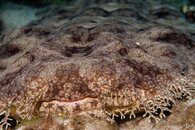BUDMANOK
Contributor
the title was What lens to start with not macro vs w/a. I think for a beginner the w/a is best.
Welcome to ScubaBoard, the world's largest scuba diving community. Registration is not required to read the forums, but we encourage you to join. Joining has its benefits and enables you to participate in the discussions.
Benefits of registering include
just to be sure: when you talk about 60mm macro, are you talking about a DX or FX?
---------- Post added March 31st, 2013 at 05:53 PM ----------
on Ken Rockwell's Website Nikon 60mm AF-D Micro I found this:
You've mentioned that the 60mm provides a longer working distance underwater. What do you mean by "longer working distance"? I mean: how close do you have to bee to take a macro of a small critter (e.g. a 2cm nudibranch)? If I understand Ken Rockwell right, then I always have to be 7cm close to the subject... But that cant be true..?[/FONT][/COLOR][/FONT][/COLOR]
the title was What lens to start with not macro vs w/a. I think for a beginner the w/a is best.

happy easter everybody and thank you very much for your replys!
Warren, the photos in your above facebook album from the Philippines are AWESOME! I would like to figure out which photos are taken with the 60mm lense. Are the other non-macro shots (turtle, red lobster, self portrait, giant clamps) also taken with the 60mm? Which Nikon DSLR and which strobes did you use? Assuming that I aquire the required macro skills - you think I could achieve similar results with this lense on my D5100?
Regards, Jan
just to be sure: when you talk about 60mm macro, are you talking about a DX or FX?
---------- Post added March 31st, 2013 at 05:53 PM ----------
on Ken Rockwell's Website Nikon 60mm AF-D Micro I found this:
You've mentioned that the 60mm provides a longer working distance underwater. What do you mean by "longer working distance"? I mean: how close do you have to bee to take a macro of a small critter (e.g. a 2cm nudibranch)? If I understand Ken Rockwell right, then I always have to be 7cm close to the subject... But that cant be true..?[/FONT][/COLOR][/FONT][/COLOR]
The 60mm works for both DX and FX. With DX, there is a 1.5 crop factor (effectively becomes 90mm).
Note that Ken Rockwell is comparing the 60mm with the 105mm, both macro lenses, which by design can achieve 1:1 magnification ratio. The 35mm f1.8 is not a macro lens, its magnification ratio is 1:6.25 (0.16x magnification), which means objects will appear smaller, not necessarily what you want when you want to take a picture of small critters and when you want to fill the frame. More information here:
Macro photography - Wikipedia, the free encyclopedia
Longer working distance means you can be farther apart from the subject and still be able to fill the frame. This is compared to the 35mm. The working distance for the 105mm is even longer compared to the 60mm. So why not go to the 105mm, as recommended by Ken Rockwell, you might ask? Depends on the kind of environment you are working in. Underwater, because water absorbs light, you want to get as close as possible to the subject, but not too close. Also, if the water is murky the longer working distance will work against you, because the longer the working distance is the more particulates might be a problem in your shot. As you can see from the responses you got so far, for a lot of people the 60mm achieves a good compromise.
---------- Post added March 31st, 2013 at 05:29 PM ----------
You are certainly entitled to your opinion, but the OP did mention in his original post that he likes to shoot close-up shots of marine critters, and that he doesn't yet favor wide-angle shots. Also, in my personal experience, macro is easier than wide-angle.

